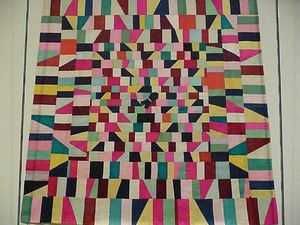Bojagi
- "SuBo" redirects here. For the singer, see Susan Boyle.
| Bojagi | |
 Bojagi held at Asian Art Museum of San Francisco | |
| Korean name | |
|---|---|
| Hangul | 보자기 / 보 |
| Hanja | 褓 |
| Revised Romanization | bojagi / bo |
| McCune–Reischauer | pojagi / po |
A bojagi or bo for short (also pojagi or bojaki) is a traditional Korean wrapping cloth. Bojagi are square and can be made from a variety of materials, though silk is common. Embroidered bojagi are known as subo.[1]
Bojagi have many uses, including as gift wrapping, in weddings, and in Buddhist rites.[1]
The "Korean Beauty" postage stamp series included a stamp in 1997 to honor bojagi as part of the rich cultural heritage of Korea.[2]
History
Bojagi flourished during the Joseon Dynasty (1392–1910),[3] although their beginnings appear to be from the Three Kingdoms Period.[4] The earliest surviving example is from the twelfth century, and these early clothes were originally used in a Buddhist context, as tablecloths or coverings for sutras.[4]
Wrapping cloths used within the palace were known as kung-bo and wrapping cloths used by the general population were min-bo. The popular patchwork bojagi often seen in museums today were only made and used by the common people.[5]
Dimensions
Traditionally, the size of the bojagi is based on squares measuring from one p'ok in width (approximately 35 cm), for small items, to ten p'ok for larger objects such as bedding.[5][6]
Court use of bojagi
In contrast to the brightly coloured min-bo, which were made from fabric scraps, within the Joseon royal court the preferred fabric in bojagi construction was pink-red[7] to purple[8] cloth, domestically produced fabrics.[7] Unlike the used and re-used frugality of non-royal wrapping cloths, on special occasions that included royal birthdays and New Year’s Day, new bojagi had to be commissioned.[9]
Commoner use of bojagi
Min-bo or Chogakbo (조각보) seem to be the best known variety of bojagi, as the two terms are often used interchangeably in English-language sources.[10] These cloths were created by the women of the household, from leftover scraps of fabric from other sewing, pieced together. Both symmetrical 'regular' and random-seeming 'irregular' patterned cloths were sewn, probably selected by an individual woman's aesthetic tastes.[4]
The facade of the flagship store of French jeweler Cartier in Cheongdam-dong is reportedly inspired by the craft.[11]
As food coverings
Patchwork, or chogak bo wrapping cloths are closely associated with food coverings. The mid-19th century to early 20th century examples that have survived until the present day, often have a small loop of ribbon attached in the centre of the square, to aid in lifting the cover away from food. Table-sized bojagi often have straps attached to the corners, so they can be fastened to the table, to secure items in place, when the table is moved.[7]
Different bojagi were used for covering different foods and at different seasons. While lightweight cloths helped air to circulate during summer, to keep food warm in winter bojagi could be padded and lined as well.[7] To prevent the bojagi from being dirtied from food, the underside is often lined with oiled paper.[4][7]
For carrying items
Bojagi were used for transporting items, as well as covering, or keeping things together in storage. One such example is a 'knapsack' arrangement, where the cloth is wrapped and tied so that items can be securely transported upon ones' back.[12][13]
Embroidered bojagi
Embroidered bojagi, or subo (수보), as the prefix su means embroidery, was another form of decorated cloth. A common ornament was that of stylized trees,[10] varying in style from 'naive',[10] to detailed depictions of flowers, fruits, birds and symbols of good luck.[8][14] These cloths are closely associated with joyous occasions such as betrothals and weddings,[4] used to wrap items such as gifts from the family of the bridegroom to the new bride, and the symbolic wooden wedding geese.[15]
The embroidery was done with spun thread, on a cotton or silk ground. The subo fabric was then lined, and possibly padded.[4]
See also
References
- ↑ 1.0 1.1 About Korea - Bojagi, korea.net
- ↑ Why triangles & squares are common shapes used for Korean quilts
- ↑ Pojagi | Encyclopedia of Modern Asia, bookrags.com
- ↑ 4.0 4.1 4.2 4.3 4.4 4.5 Kim, Keumja Pak "A Celebration of Life: Patchwork and Embroidered Pojagi by Unknown Korean Women" in Young-Key Kim-Renaud [ed.] 'Creative Women of Korea' (M.E. Sharpe, 2004) pp.163-173
- ↑ 5.0 5.1 Kim, Keumja Paik "Profusion of Colour: Korean Costumes and Wrapping Clothes of the Chosŏn Dynasty" in Julia M. White and Huh Dong-hwa [eds.] Wrappings of Happiness: A Traditional Korean Art Form (Honolulu Academy of Arts Publishing: 2003)
- ↑ 이불보 Wrapping Cloth for Bedding Kyungwoon Museum.
- ↑ 7.0 7.1 7.2 7.3 7.4 Huh Dong-hwa "History and Art in Traditional Wrapping Cloths" in Julia M. White and Huh Dong-hwa [eds.] Wrappings of Happiness: A Traditional Korean Art Form (Honolulu Academy of Arts Publishing: 2003) p.20-24
- ↑ 8.0 8.1 Framed Royal Purple Wrapping Cloth with Peacocks Korean Art and Antiques
- ↑ Wrapping cloth (FE.156-1983) Victoria and Albert Museum Collections.
- ↑ 10.0 10.1 10.2 It's a wrap! London Korean Links.
- ↑ Garcia, Cathy Rose A. (28 September 2008). "Cartier Opens Flagship Store in Cheongdam". Korea Times. Retrieved 9 March 2013.
- ↑ Museum of Old Roads: Travel Korean Language.
- ↑ 괴나리 봇짐 Traveler's Knapsack and Straw Sandals Kyungwoon Museum
- ↑ 우리의 전통 보자기 (Our Traditional Cloths)
- ↑ 기러기보 Embroidered Wrapping Cloth for the Wedding Goose Kyungwoon Museum
External links
- Gift wrapping using Japanese methods
- Pojagi.jp
- Cloth, Color and Beyond: Korea Society Bojagi Podcast
- list of Japanese books on Pojagi
- Beauty of Korea: Pojagi Koreana Quarterly, Summer, 1995.
- youngminlee.com Bojagi - Youngmin Lee's Korean Textile Works